
Mantra: How to Create Wealth Consciousness, Step 2 of 4
Jason 0 Comments Retire Wealthy
Now, the second step is working with the Mantra
Shreem Brzee. First of all, you have to know what a Mantra
is. There are so many definitions of Mantra. And it has almost become an English word. The one definition that I personally like,
there are several definitions I like. I’m not going to go into all of them, but
at least I will confine to one. Mantra is Man- tra. “Man-“ is “Mind.” “-Tra” is “to protect” in Sanskrit
— that which protects your Mind. Shreem Brzee is going to protect your Mind. Protect your Mind in two ways. Protect it with prosperity thoughts and protect
it also against confused, negative poverty-thinking. So that is what it is going to do. That’s why a Mantra is often conceived as
something extraordinary, something magical, something super-normal, something Divine.
It is Divine. A Mantra is of a Divine origin. And where did it originate from? It originated from the Space. And in this case, there is a prosperity galaxy. There are so many galaxies. And we cannot even go to Mars or Moon and
live there. But the Rishis were able to go there and live
everywhere. And then, this is one of the galaxies that
they have been able to reach in their meditation. And they brought this Mantra Shreem Brzee.
And initially, I have to tell you that Brzee
was the one that was revealed. And Brzee will remove karma and [it] will
give money. And Shreem is the Mantra for the Goddess of
Wealth. And how it works: As you begin to use this
Mantra, it will completely change not only your Mindset, but it will also change you
entire biological structure. And it will also change your aura. There are seven bands around your aura and
around your body. It will change even that too. Now we have proof that as soon as you use
the sound Shreem Brzee, there is a perfect geometrical structure.

We didn’t do the research. A person in Singapore who was benefited tremendously
by this Shreem Brzee, sent it to the lab in Japan, Emoto’s Lab, and then he put it out
[published research on it]. Now, this is what happens. That means it can go and change even your
atomic structure. And I am personally doing in my own small
lab in India, on how it can change the stem cells, your stem cells. So I am very committed. Maybe I am committed right now. Not before, because I know that you have to
really change it at the Soul level or life level. But those things don’t make much sense but
we talk about stem cells aka, and that’s what the research is going on. And fabulous research is coming out. This is not the time to talk about it.
So Shreem Brzee finally is the only way that
I know of to change your Mindset and change your consciousness, change your body, and
then bring you to wealth consciousness. Not only for you, but for the entire world,
but at the same time, I want to emphasize that I have said Shreem Brzee for a few times
and the money didn’t fall off the roof. It will never fall off the roof. If you want to join the program thinking that
there will be a magic because it’s a Mantra and the money will come and fall off the roof. It will never do that, I can guarantee. Then what will it do? It will change your consciousness. The miracle that it will do is the miracle
of changing your poverty consciousness, scarcity consciousness, your negativity, your confusion
about money, and then order your consciousness, and orient your consciousness, orient your
life breath to the Wealth Consciousness.
That is the miracle that you are going to
see happening. And what’s the requirement Commitment..

RETIREMENT PLANNING TIPS FOR AGE 59+
Jason 0 Comments Retire Wealthy Retirement Planning Tips for Retiree's
Are you planning for retirement and you're just not sure of the next step. By the end of this video, you will have received seven crucial tips to help you plan for a successful, secure retirement. To learn more about securing your retirement and all the different elements you need to know, subscribe to our channel and hit the bell so you'll be notified of every episode posted on Mondays. We have helped hundreds of our clients with these exact seven tips on planning for their retirement, and they tell us they've never been more confident about their retirement plan. Now it's your turn. Let's dive in. Tip number one, understand your spending. This is really important. Now, what you do not want to do here is to think about what your salary is currently, while you're working.
You want to think about what is your bring home pay after you've put money in your 401(k), after you've been able to pay health insurance, or whatever that might be, that comes out of your paycheck. Think what comes home on a monthly basis. Now, do you save any of that money that goes into your savings account at the bank? Take that out. What we really want to know is how much do you actually spend every month? By the way, if you have a mortgage or some payment that's going to go away by the time you retire, subtract that.
That will let you know what your spending will be when you're in retirement. Tip number two, break income needs into three different areas. You have your essential needs, your wants, and then your giveaway money. It may seem simple, but it's really important to understand what those actually are. Your essential needs are the basics, paying the bills, keeping the lights on, staying fed, staying relatively happy. Your wants are going to be things that you want to do. I know we work hard to get to retirement, we don't want to give up our wants so we want to plan for those as well. Things like having that membership to a golf club or a health club, being able to travel in retirement, so being able to take those vacations that you've been looking forward to. Being able to spoil your grandkids or family members. These are all wants that we want to have planned into the budget for retirement. And then the last is giveaway money. So whether you want to be gifting throughout retirement or whether you want to be donating to charity, or whether you just want to have a plan in place for what you're going to leave behind, that really comes into the giveaway money.
So three major topics, when it comes to your expenses, your essential income needs, your wants, and then your giveaway money. Tip number three, list all of your guaranteed income that will be there after you retire. Now, it's really important now that you understand it needs to be guaranteed. So what are we talking about? Well, that's going to be things like social security, a pension, if you have one, or if you've secured an annuity. It's really important that they be guaranteed because this part of your income plan is what's going to help take care of those essential needs in retirement. You do not want to count things like rent or dividends. While they're nice and they might be secure, they're not guaranteed.
Tip number four, don't rely on the 4% rule. You may be asking yourself, what is the 4% rule? Well, very simply, it's basically saying you can take out 4% of your assets. So for example, let's say by the time you get to retirement, you've accumulated a million dollars. 4% of that is $40,000. The rule, and this is a rule of thumb by the way, the rule says that you could live off of $40,000 a year for the rest of your life and be okay.
Now, we see a couple of flaws in this rule. What if you're invested in the market and your million falls because of market volatility. So go to a 2008 scenario where the average investor loss, anywhere from 30 to 50%. What if you lost 50%? Now your million is 500,000. Are you still going to be able to withdraw 40,000 a year to keep up with your living expenses? Probably not. So that is something that's very important that we realize that we cannot rely on the 4% rule and we need a plan that is structured for our specific situation. Comment below and let us know, what is your biggest retirement planning question? Tip number five, make a list of all of the different types of accounts you have. Now, why are we saying types of accounts? What does that even mean? Well, you're going to want to list, do you have a 401(k), 403(b), a traditional IRA, a Roth IRA, or a brokerage account or a savings account in the bank? You want to list all of those account types and the reason why is because they get taxed differently.

And so when you're building out your retirement income plan, taxes are extremely important. So make sure you make a list of all the different types of accounts. Tip number six, consider how you feel about investing during retirement. Let's talk about this, how would you feel if you lost 10% of your entire retirement nest egg? Well, when I say 10% and you may say, "Well, that doesn't feel like much." But let's put it to a dollar amount. Let's say you have a million dollars saved up and you lose 10% of that.
Well, that's a $100,000. That may feel a bit more than just saying 10%, right? So let's think about that. When you're working and you're putting money into these retirement plans, like a 401(k), typically you started young and you set up an allocation that's probably pretty aggressive, and you just set it and forget it. You're putting money in and it's making money, you don't really think about it.
But then you get down the line closer to retirement, and you're still invested that way when you should be considering your risk exposure more and more, as you get closer to retirement. So that's something that we have to think about as we are transitioning into this phase. Now, what we talk about is, you got to know your risk tolerance and you got to understand how you're currently invested. So many times when we talk to people, they come in the door and they don't even realize how much risk they have on their overall portfolio. So that's why we talk about always looking at alternatives that are going to fit your investment personality. Tip number seven, don't overly worry about the question, do I have enough to retire? Well, why did we say that? Well, we have clients that have a few 100,000 and we have clients that have a few million dollars. And sometimes clients that have a few million dollars do not have as good of a plan as the person who has a few 100,000.
Why is that? Well, if you're spending so much money that you're draining your accounts too rapidly, you're at a threat to run out of money, no matter how much you have. So what's the bigger issue? Our spending plan. We need to really understand how we're spending money and how that's going to play out throughout retirement. So, as you're thinking about your retirement, focus on your spending plan, more than being worried about, do I have enough to retire? Well, that's our seven tips to help you get started down the path to secure your retirement, but what else is needed? Well, there's a lot of different moving parts when it comes to planning for, and living through retirement. We have created a mini video series called Four Steps to Secure Your Retirement. These videos walk you through step-by-step so that you will know exactly what you need to do to secure your retirement. We also have a podcast called Secure Your Retirement. You can subscribe to our podcast with the link below.
For more detailed retirement tips, watch these videos, create your retirement income plan, investing during retirement, buy and hold or active management. If you like this video, hit the like button and be sure to subscribe and share it with your friends.
.

Suze Orman Gets You Ready For Retirement | Money
Jason 0 Comments Retire Wealthy Retirement Planning Tips for Retiree's
I am the one and only Susie Orman, and my goal is to make you as independent from financial advisors as possible, because you are never going to be powerful in life until you are powerful over your own money. And my job is to make sure you can achieve just that. So rather than asking more from your money that it can't give you, you have to ask less of your spending habits from yourself which means you have got to get rid of all credit card debt. All debt. Total debt of car loans, mortgage debt, all debt that you have has to go. So one thing that you have to look at is if you have a debt, that is your sign that you can't afford to retire. Maybe you retire from the job that you currently have, but then you have to get some side hustles or something. So my best advice to you is start living below your means but within your needs.
How do you do that? From this day forward, every time you go to make a purchase, ask yourself a question, 'Is this a want or is this a need?'. If it's a want, please don't purchase it. If it's a need, you have to buy it. It's just that simple. You know, a lot of you, when you're approaching retirement, you look at your portfolio and usually your portfolio is this: you have a 401 9k), 403 (b), a Thrift savings plan if you work for the government or whatever, it may be, the military.
And now you've retired and now normally you would then do an IRA rollover with that money. But now you're 'Oh my God, what should I do? I never invest in money before, really. I've just put money in every single month into these mutual funds. And now I don't know what to do.'. If you are going to be withdrawing money from your retirement account to pay for your everyday expenses, you have to know that you have — ready for this, everybody — at least three years of expenses in cash, earning you a high interest rate or whatever the highest interest rate is that you can get.
The rest, at this point in time, should really be diversified into high-yield dividend-paying either stocks or exchange-traded funds. If you need really short term money and you want to get a higher interest rate for very short term money, right, I don't have a problem with bills. And, you know, I myself will put a serious sum of money protected in bills because if you're investing more than $250,000, then you really have to go to a variety of banks in order to get FDIC insurance — or even credit unions. So if you have a large sum of money of $1 – $3 million that you just want liquid, then I use Treasury bills for that. I don't have a problem with that at all. And they keep rolling over but I know that they're guaranteed by the taxing authority of the United States government. If we're talking now, though, about amounts that are $250,000 or below, I think that you're far better off, right here and right now, putting the money in a high-yielding savings account.

So for smaller amounts of money, savings account. For $250,000 or above that you want liquidity and the highest interest rate, I don't have a problem with Treasury bills. You don't have the documents in place today to protect your tomorrows. You don't have a will. You don't have a living revocable trust. You don't have an advance directive and durable power of attorney for health care. And you don't have a power of attorney for finances.
You need those things not just to make sure that your assets pass freely to your beneficiaries. You need those things for you. So here you are now and your spouse has died. Who, as you get older, who's going to write your checks for you? Who's going to pay your bills for you? If you get sick, you have an incapacity, who's going to do that? So it's very important that you get the documents that are correct. Long-term care insurance, if you can afford it, will absolutely protect your little nest egg if one of you ends up in a nursing home.
One out of three of you will spend some time in a nursing home after the age of 65. So look around and if you decide to buy long-term care insurance, the perfect age to buy it is really in your 50s. But here's the key. You better know that you can afford a long-term care insurance premium because they're not cheap. From the age of when you buy it all the way until at least 84 because it makes no sense for you to purchase it. Pay for it in your 50s, in your 60s. Now here you are in your mid 70s, you can't afford it anymore and then you drop it.
You're better off just not buying it at all. Let me just put it to you bluntly. You are to stay as far away from a reverse mortgage as you possibly can. There is not one situation out there where you should be getting a reverse mortgage. A reverse mortgage is based on the interest rates that are in effect right here and now. It's based on your age. And it just makes no sense. If you own a home and you can't afford to stay in that home — with real estate prices as high as they are — you could just sell your house right now and either seriously downsize, or there is nothing wrong with renting..
Read More
Retirement Speech: Insanely Easy 3 Step Structure
Jason 0 Comments Retire Wealthy Retirement Planning Tips for Retiree's
whether we have to prepare for it or if you have to improvise there's a very simple framework that we can follow when it comes to delivering a retirement speech let's get into it hey my name is radeep and i love learning about effective communications and sharing those learnings with you so that you can level up your communications game as well okay now the framework we're going to talk about very very simple the past present and future that's it we start by talking about when we first met them we felt at that time we then move on to talking about how that journey has been so far and what we feel about them now and then we move on to saying what we wish for them in the future that's it an example would flow something like this i remember the first project i worked with you on when you first joined to be honest we didn't get along very much in those early days but as we worked more closely i got to know you more not just as a colleague but as a friend and from not wanting to work with you from that first project to looking forward to having you on every project the only thing i'm going to miss more than your work ethic is your wacky sense of humor i remember you telling me how you always wanted to travel every country in the world now i hope you get to achieve that and take another great adventure off from your bucket list that's it whether we have to prepare or improvise this framework can work in almost any situation and if you want to be a little more interesting we can make this format a little unique for example we can get a few colleagues together and create a fun skit for that person or we can create some sort of video to showcase the memories or the journey that that person has had and that's about it a very quick and short way to help you give a damn speech and if you want an in-depth explanation along with a much longer sample speech we've written an entire article on this which is linked below and go check it out on franticallyspeaking.com and if you're somebody who's very nervous about speaking in front of people and want some advice on calming those knows you can check out this video right here

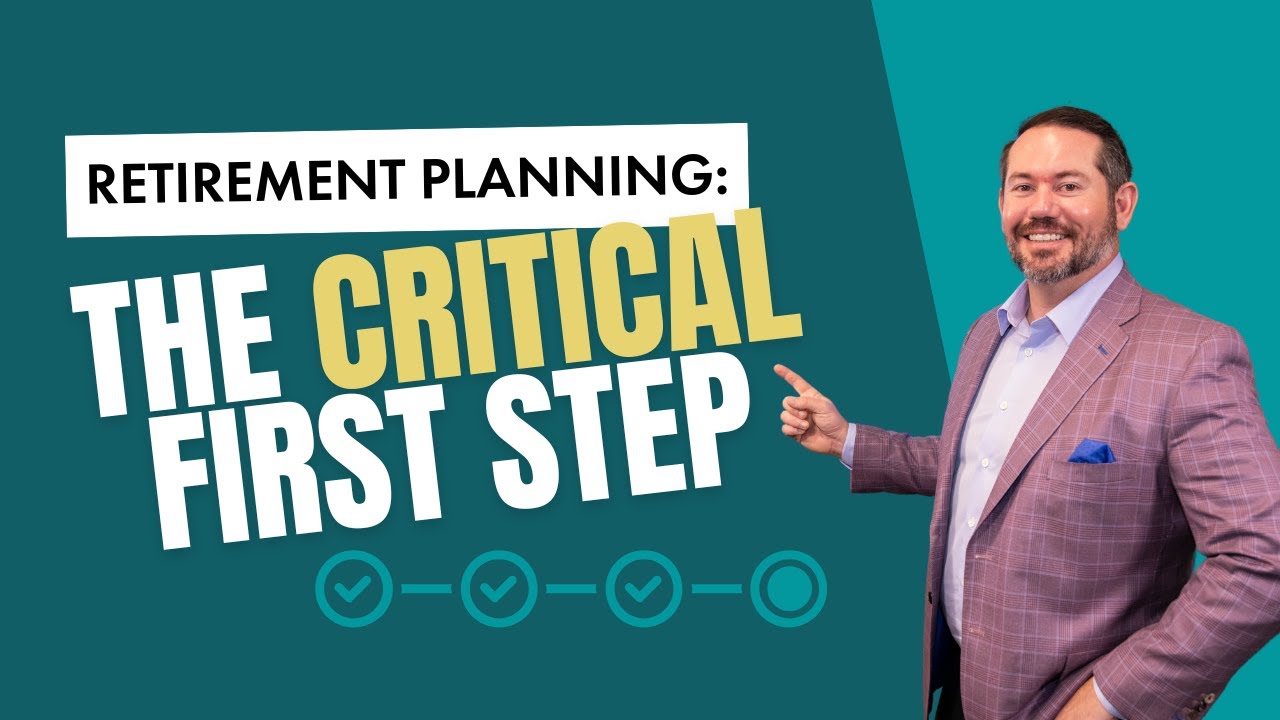
Step 1 of Retirement Success Plan: Investment and Portfolio Analysis
Jason 0 Comments Retire Wealthy Retirement Planning Tips for Retiree's
I'm giving you a choice of two Investments investment a and investment B both of them return 10 over the previous year which one would you rather have been invested [Music] oftentimes when I ask this question to a prospective client I'll get the response Troy it doesn't matter they both return 10 Give Me A or B but when it comes to retirement planning and this is why step one of the rrsp is so important the allocation meeting it's not about the return necessarily it's about how much risk did we have to take to get that return investment A and B both had a 10 percent return but this is just one outcome in an infinite set of possible outcomes remember these are two distinct Investments with different characteristics possibly different purposes so even though they return the same the question is how much risk did we take to earn this return are we being compensated enough from a reward standpoint based on the risk that we're taking so with a high degree of statistical confidence we could analyze and say investment a had a likely downside scenario of somewhere between five to fifteen percent if a different set of outcomes or circumstances occurred that's the risk profile but invest B had a possible downside of negative 20 to negative 40 percent now with that new bit of information which investment would you choose investment a or investment B all individual Investments or combination of Investments could be plotted somewhere along this chart this is what we call the efficient Frontier over here we have the return the expected return and over here we have the risk that we're taking so ideally we have Investments that are more to the left which represents lower risk and higher up the y-axis which represents higher return so if you own five different stocks that portfolio in and of itself could be plotted somewhere on this graph if you have one security let's say you're fully invested in your company stock you could plot it right here on this graph now if you have 20 or 30 or 50 different mutual funds or ETFs or individual stocks once again that set of Investments can be plotted somewhere on this graph so when we plot investment a and investment B on the graph here we can clearly see that they have a similar return profile but investment a has less risk so this makes it easier to identify as an investment that we would rather place our dollars now down here I have investment C could be a portfolio of stocks this could be maybe if you have a lot of money invested in your company stock but we clearly see that we're taking more risk without being rewarded for that risk that we're taking another way to think about this is think of your skills and the capability that you have in your current job or in your former job if you're if you're retired would you take a salary that was much much lower than Market in order to do that same job with those same responsibilities no you probably would not I know you would not that's what we're doing here with investment C essentially we are taking risk or taking on responsibilities in that example while not being compensated for it okay so think of these letters investment a investment being investment C this was the one we wanted to be in this is the one that we took a little bit more risk for the same return and over here we just don't want to be in I want to liken this to GPA grade point average because we're all pretty familiar with that either you from your schooling experience you have kids or grandkids an a investment or set of Investments kind of I put a in air quotes here that's the GPA so what we want to do with your portfolio in retirement is increase its GPA we want to reduce risk and increase expected return now that you have a good understanding of risk and return and how every set of Investments can be placed somewhere on that graph it's now important to tie that into retirement planning so the allocation determines how much income you can take how much money will be left later in life it determines how much tax you'll pay in retirement it can also impact your health care strategy or long-term care strategy and it definitely impacts your overall estate plan so those are the five steps of the RSP and this is why the allocation is so critical it's step one because it impacts everything else when you reach out to us for the first time all we do on that first visit is get to understand who you are and what's important to you we're going to gather some of the objective data under of course understand what your vision is for retirement your goals but the objective data is the current portfolio the financial statements the tax information how much we want to spend in retirement in between that first and the second visit we're going to go through an analysis to see where your portfolio falls on that Spectrum in order to understand if there's congruence between your willingness to take risk for the expected return that your portfolio can provide and where you currently are we first have to identify what is that willingness that you have to take on risk so we have to first understand your willingness to take risk so this is a pretty simple questionnaire here simply saying over the next six months you're comfortable risking this in order to make this potential return now this is what we call a symmetrical risk return profile we're essentially risking one dollar to earn one dollar but really what we're trying to identify here is what is your comfort zone on the downside because what we're going to try to do is create a portfolio that has an asymmetrical risk return profile so less risk to achieve more potential return so are you comfortable losing seven percent over the next six months in a recession or are you fine to let it stay invested and you believe long-term capital markets are going to do just fine so you're more comfortable in the short term possibly a 13 loss there's no right or wrong answer here but everyone's personal willingness to take risk is different so we have to identify that because if you have a portfolio that has too much risk that is the one thing that will absolutely be certain to blow up a long-term retirement plan if the market goes down you call us up panicking and say Troy I need to get out of the market I can't take it anymore well you most likely won't be in there for the rebound and all the planning that we've done up to that point can be significantly impacted because we were expecting the risk profile based on the conversations that we had to be structured properly and if it's not and the markets go down then we get out well all of a sudden everything is completely messed up so this is why your risk willingness is such an important concept because if we're putting a plan together we need to know that you're going to stick with it because markets will go down one other thing to point out here I like to focus on the dollar amount because percentages can be deceiving I had a client a long time ago or a prospective client come in and say Troy I'm comfortable losing about 10 percent he had two million dollars so I said okay if the market goes down and you lose 200 000 you're okay with that he said no I fire you instantly so there was a disconnect between the 10 percent and the two hundred thousand dollars so I like to talk about risk in terms of dollars because percentages seem just they don't really drill down into our willingness to take risk whereas if we focus on the dollar amount that hits home okay so this would be coming back on a second visit and we're looking at your actual portfolio and this is very similar to what we see someone maybe told us that they're they're comfortable let's say with about 50 stock but when we do the analysis what we often find is that there's more risk inside the portfolio but on top of there being more risk oftentimes it's not the most efficiently structured so we see down here we actually have bringing the GPA back a 3.1 so this means that it's not the most efficient from a risk-adjusted return standpoint means we're we're not where we want to be on that graph an annual range 3.42 so for taking this much risk we don't want to be rewarded with an annual range midpoint here of only 3.42 percent over the next six months now we also see with the potential risk and reward over the next six months there's a 95 percent probability that this portfolio to the downside could lose 16 percent over a six-month period and the upside is plus 19 so these are very very wide guard rails okay if we extrapolate that out over the course of one year we have a negative 32 percent and a plus 38 so most of our clients aren't comfortable losing potentially 38 percent in a single year so for this level of risk based on the questionnaire that we asked earlier and they come in around a 50 risk score this is not only too much risk inside the portfolio but it's really poorly constructed from an analytical standpoint and the guardrails are far too wide we're not being compensated for the risk that we're taking and that's what this GPA right here is telling us that's the analysis that we go through between the first and the second visit and that's often what we see it's not efficiently structured the portfolio possibly too much risk and oftentimes that GPA is a lower number meaning we're not being compensated with enough expected return for the risk that we're taking so in between that first and the second visit that's what our team is doing looking at your particular situation now once you become a client and we go through that allocation visit this is step one of the RSP what we're trying to do is to create a proposed portfolio that brings first and foremost the risk number in line with that questionnaire that we asked you before we're also trying to create some asymmetry in regards to the risk that we're taking in the expected Return of the set of Investments that we've put together so now what we've done is we've lowered the overall risk score of the portfolio to be more in line with the questions that we were asking in regards to that that slider that we had on the screen if you're not comfortable with potentially losing 19 percent in a six-month period we need to bring the risk score down in the portfolio so that's the first thing that we're trying to do the second thing is we're trying to create asymmetry here so you see this we're risking nine for the potential of 15.

This is over a six month period so we extrapolate that out over 12 months it's minus 18 for plus 30. that's asymmetry when it comes to the risk return profile additionally we've increased the GPA of the portfolio so the maximum according to the software is a 4.3 so this means we're being properly compensated for the risk that we're taking the expected return is the proper compensation for that risk now anything can happen Marcus can go up or down but what we've done is we've created an efficient portfolio that when markets are up or when markets are down our potential returns are in line with our willingness to take risks but also when we've tied this into your income plan tax plan and the rest of the RSP it's all creating a much more congruent financial planning experience also the expense ratio over here I don't know if you noticed before but we had an expense ratio in the mutual funds and that current portfolio in the proposed portfolio we've eliminated those fees so in summary here during the first visit we get to know where your willingness to take risk is in between the first and the second visit we're going through and doing an analysis of your current portfolio identifying the risk score see if there's any disconnect between your willingness to take risk in the actual risk inside your portfolio but then also looking at the potential return what is the GPA what is the expected return what is the Symmetry between these two once you become a client and we go through the allocation meeting here's where we look at the proposed portfolio where we get the risk number of the portfolio in a line with an alignment with your willingness to take risks try to increase the asymmetry between the risk and the potential return increase the GPA of the portfolio and increase the expected return now all of this is a shortened version of what the actual allocation visit looks like but it hopefully conveys how important this step is because it not only determines the amount of risk or the potential downside you could see to your values in retirement it also of course contributes to the potential return which then dominoes into your income for retirement the taxes the health care plan and also the estate strategy so step one allocation extremely critical when it comes to the retirement success plan this is why we do it first [Music] thank you
Read More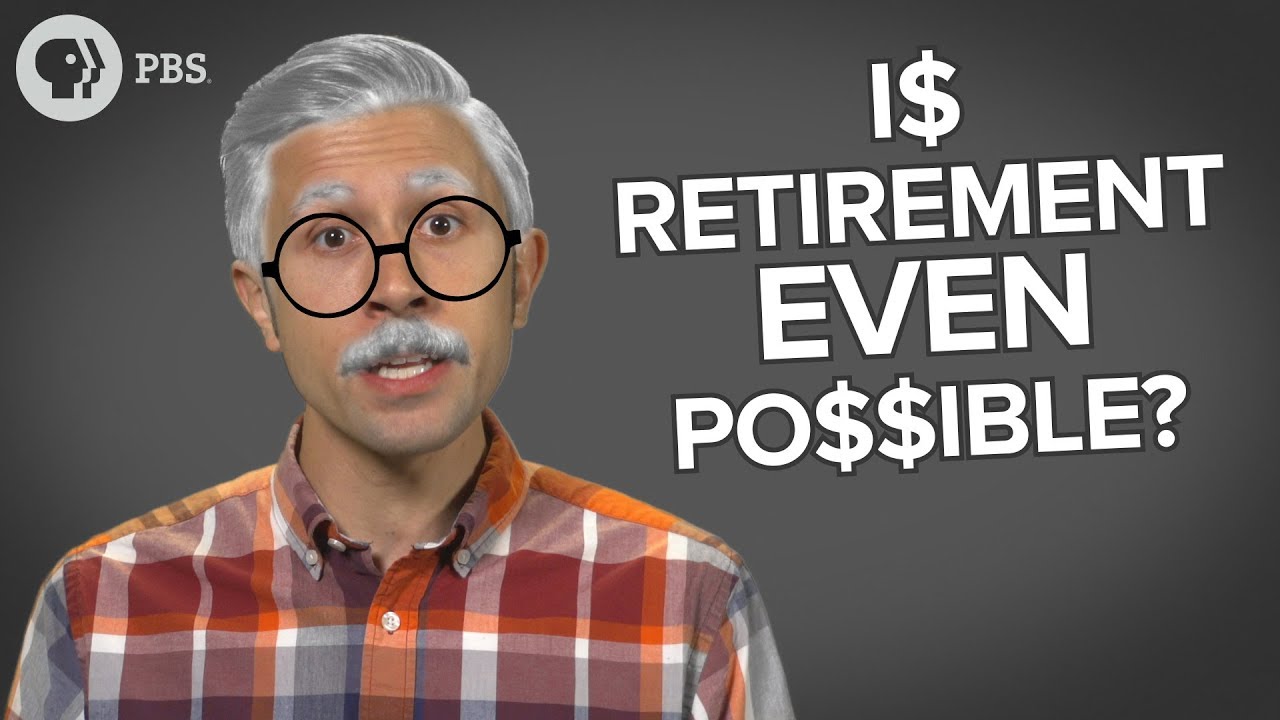
Is Retirement Even POSSIBLE?
Jason 0 Comments Retire Wealthy Retirement Planning Tips for Retiree's
We want to thank Google's Science Journal App for supporting PBS Digital Studios. Imagine you had a time machine and with the
press of a button you could transport yourself to your own 75th birthday. Assuming you’re still around, what do you
hope to find yourself doing? Writing your memoirs? Sailing around the world? Partying in San Junipero? Very few of us would answer “cleaning toilets
at a fast-food joint,” or “begging for change on the street.” No one wants their story to end that way,
yet shockingly few of us are taking the basic steps to avoid it. The
simple fact is that if we’re lucky to live long enough, one day we will lose our desire
(or physical ability) to keep earning a paycheck. The older we get, the harder it becomes to
maintain a rigid work schedule. And as modern medicine allows us to live longer
and longer, the time we expect to spend in retirement might easily pass 30 years. Think of that for a second. 30 years without income. Nervous yet? Good. So how much would you need to not spend those
years in abject poverty.
Well, that depends on your personal needs,
standard of living, health issues, etc., but as a starting point, the AARP recommends that
to replace a $40,000 per year income for 30 years, you’ll need to start your retirement
with–take a deep breath–$1.18 million. If that number makes you feel a little dizzy…
well, you’re not alone. In one survey, Americans between 55 and 64
reported a median retirement savings of $120,000–only 10% of the amount advised by the AARP! Another survey found that 75% of Americans
over 40 are behind saving for retirement and 28% over 55 have no retirement savings at
all! There are many factors that contributed to
this problem. For one thing, wage growth declined in the
70s and 80s. It picked back up in the 90s, but then the
housing boom convinced a lot of Americans to go into debt to buy overpriced homes, and,
well, we know how that turned out. We’ve also seen an increase in cultural
pressure to show “visual displays of wealth.” A study published in the Quarterly Journal
of Economics suggests that Americans are uniquely concerned about seeming poor to others, so
they spend a disproportionate amount on things like shoes, clothes and cars.
It’s been great business for designer labels
and advertisers–not so much for our savings accounts. Lastly, changes in government policies have
made it easier to not save money. In the past, employees were automatically
enrolled in “defined benefit plans” with pre-set funding amounts to match their retirement
needs. Today’s workers have to “opt in” to
retirement plans like 401(k)s, and figure out for themselves how much to set aside. Furthermore, these plans are often “leaky,”
meaning you’re allowed to remove funds prematurely, which makes it easy to steal from your own
retirement. Does all this mean that saving for retirement
is hopeless and you should just blow your extra dough leasing a sports car? No! It’s still very possible to save up large
amounts of money on a modest income. The three special ingredients are Good Markets,
Compound Interest, and Time. To show you how these elements work together,
it’s time to… RUN THE NUMBERS! Betty is 30 years old and makes $50,000/yr.
She hasn’t saved a dime for retirement yet,
but this year she’s decided to start. Between the amount she is going to save into
her Roth IRA, her 401(k) at work, and her 401(k) match, she’s putting away $625 a
month, or $7,500 a year, That’s 15% of her income–which many experts recommend as a
good savings target. At this rate, by the time she’s 65, Betty
will have personally deposited $262,500 into her retirement account. Impressive, but still a long way from the
million dollars plus she’ll need to retire. But now we add our special ingredients! Over the last 90 years, the stock market has
grown an average of 9.8% per year. But let’s assume a little less than that…
say, 7.5% If Betty can put together a decent portfolio, she can expect her savings to grow
by an average of 7.5% per year. And as long as Betty doesn’t touch that
account, the dividends and interest she earns will generate even more dividends and interest! And over time, her savings doesn’t just
increase in a straight line… it increases exponentially! Now, by the time she’s 65, that $262,500
of her original money has ballooned to $1,277,158.92.

Nice job Betty! A couple things to keep in mind with this
scenario. It’s very likely that goods and services
will cost more in the future due to inflation. However, it’s also very likely that a 30
year old like Betty will see her salary increase as she gains more experience and skill. If she sticks to that same 15% of her salary,
she can expect to have even more set aside for retirement. What if you’re older than Betty and getting
a late start? Well, that may mean that you need to set aside
more of your paycheck, say 20 or 25 percent.
Or you may have to wait until your 70s to
retire. Either of these options is better than doing
nothing or counting on winning the lottery. There are many other factors that can change
your specific situation. Inheritances, social security, pensions, medical
conditions. If you’re not sure where to begin, you can
seek out the help of a financial planner who is a sworn fiduciary. They can outline a plan that fits your needs
and show you that preparing for retirement is not as intimidating as you may think. You don’t have to be into shuffleboard or
bird-watching to expect a little time off in your golden years. And some people want to work as long as they
can. But everyone wants the power to decide that
for themselves, especially after a lifetime of hard work. Of course, if you do manage to get access
to a time machine, you can always fall back on the old “Sports Almanac Retirement Plan.” And that’s our two cents! Thanks to Google for supporting PBS Digital Studios.
Their mobile app, Science Journal lets you take notes and measure scientific phenomena such as light, sound, and motion, using your phone, tablet or Chromebook. You can find activity ideas and additional information on their website at g.co/sciencejournal.
Read More.gif)
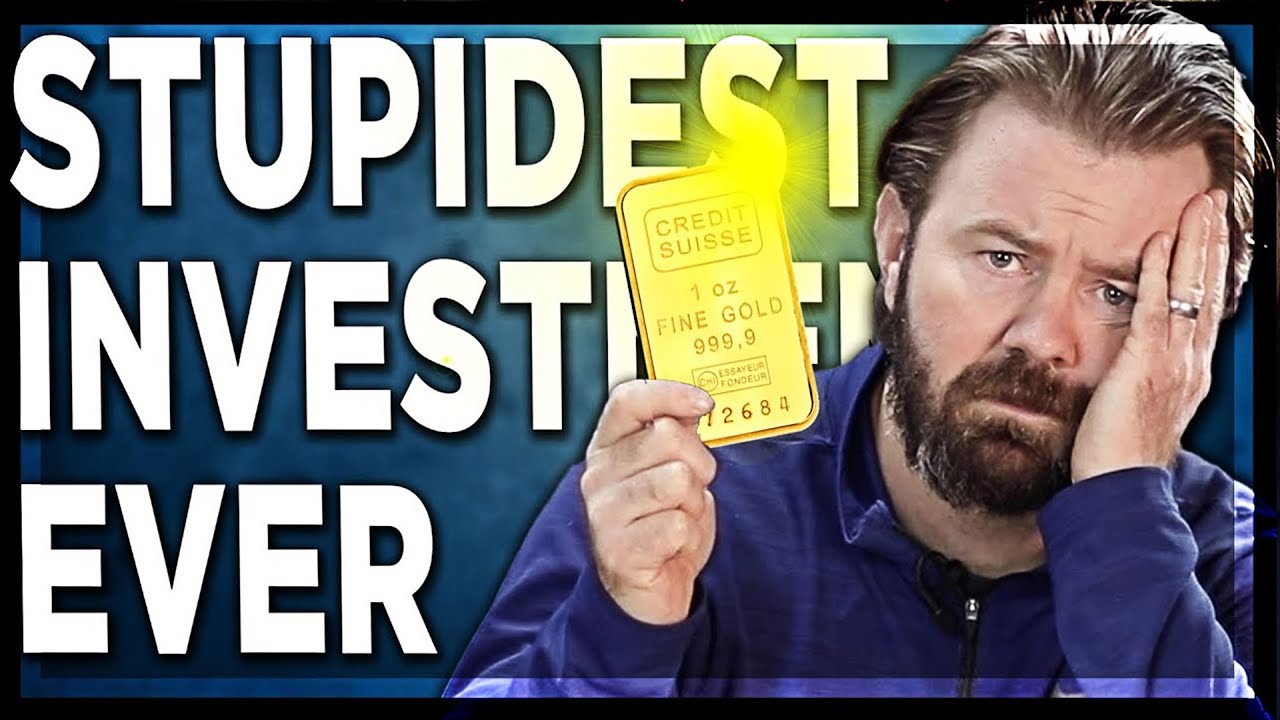


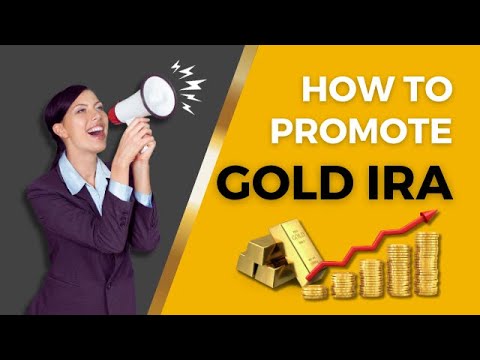

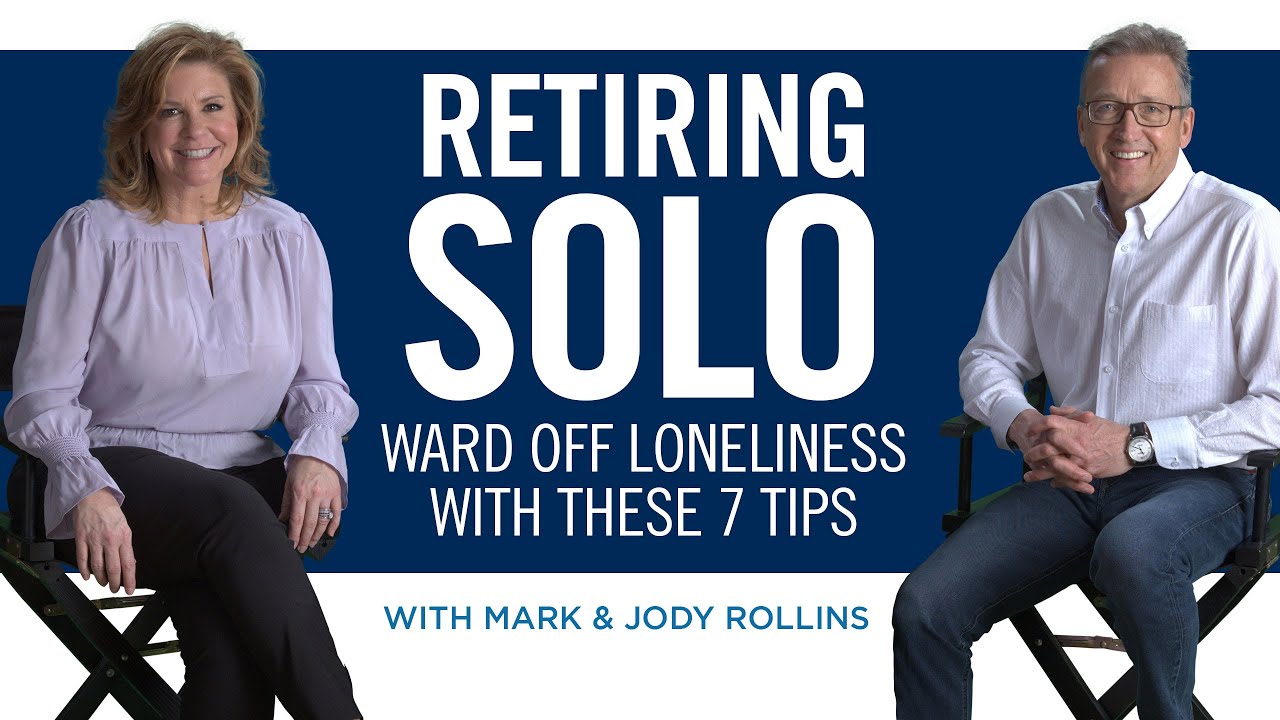


Recent Comments